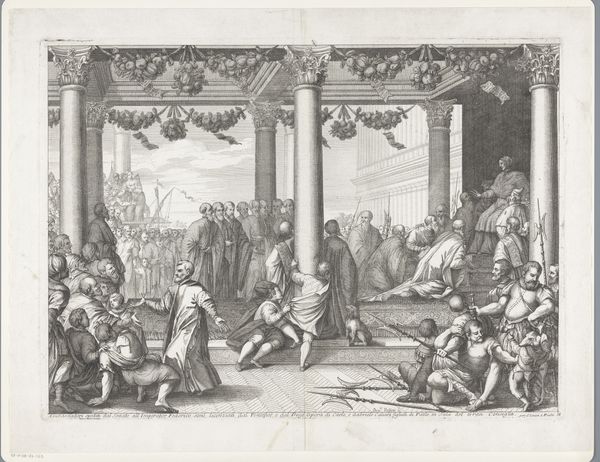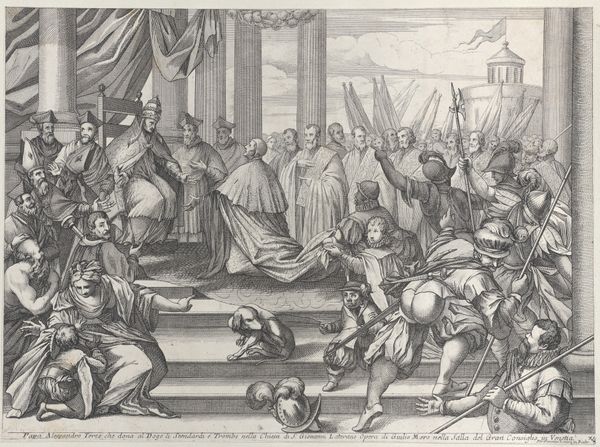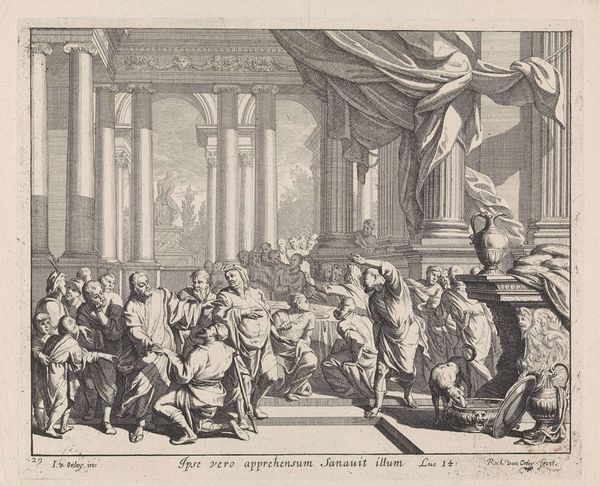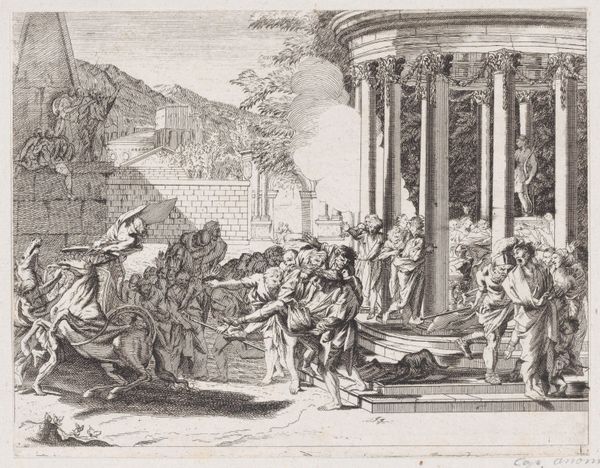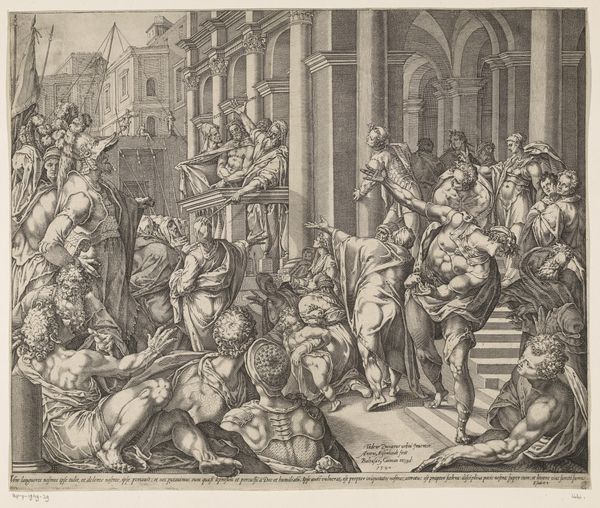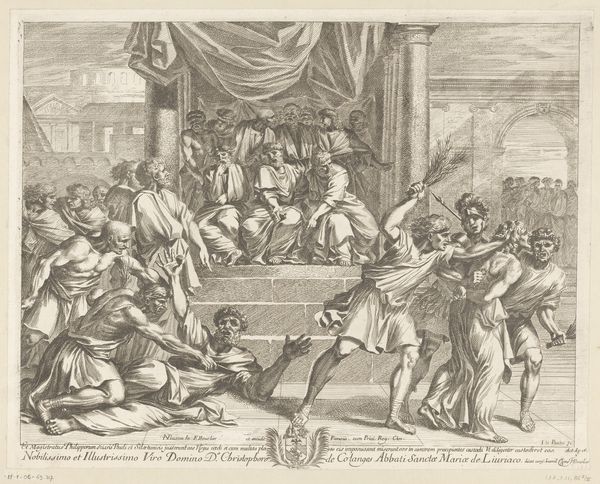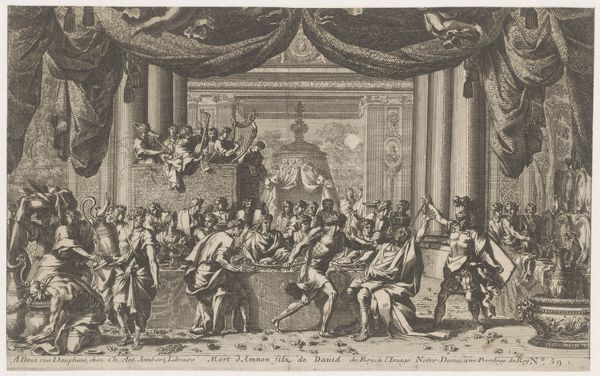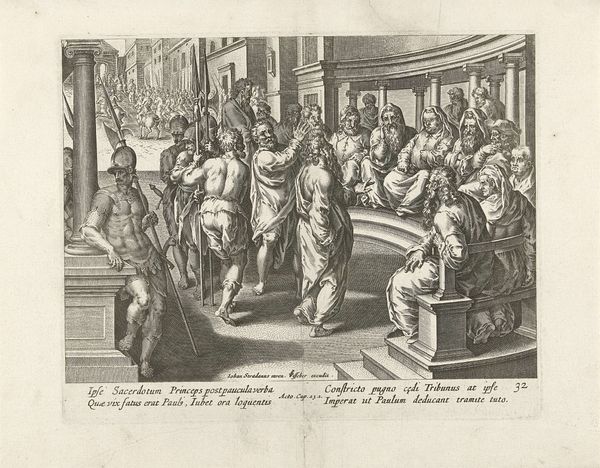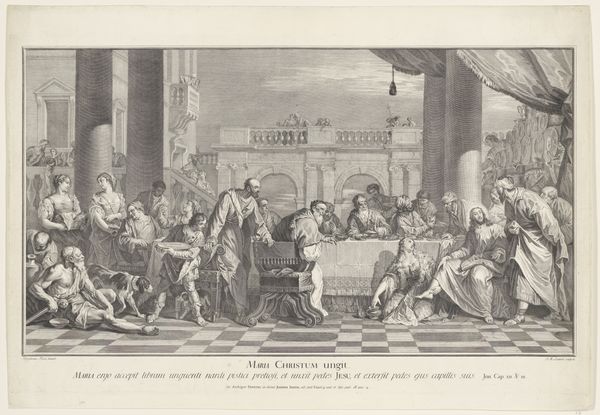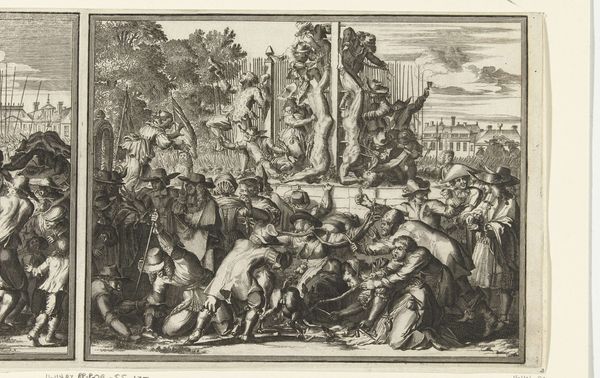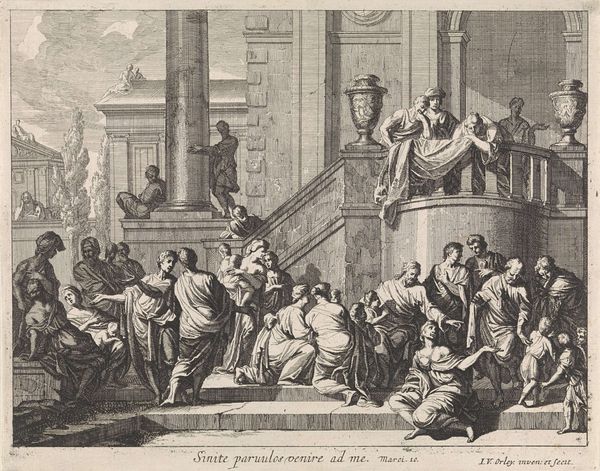
Doge Enrico Dandolo crowns Baldovino the first emperor of the Latin Empire of Constantinople 1745 - 1794
0:00
0:00
Dimensions: Plate: 15 1/8 × 19 5/8 in. (38.4 × 49.9 cm) Sheet: 15 3/8 × 19 15/16 in. (39 × 50.6 cm)
Copyright: Public Domain
Editor: This is "Doge Enrico Dandolo crowns Baldovino the first emperor of the Latin Empire of Constantinople," an engraving by Giacomo Leonardis made sometime between 1745 and 1794. It’s incredibly detailed, with all these tiny lines creating a very busy, active scene. How do you read a piece like this? Curator: From a materialist perspective, it's interesting to consider this engraving not just as a representation of a historical event, but as a *product* of its time. Look at the technique. Engraving was a very specific mode of production, relying on skilled labor to reproduce images, circulate ideas. Editor: So, you're saying the process itself is important? Curator: Exactly. Consider the social context: the Enlightenment was well underway, there was a growing market for prints, making history accessible, or at least a version of it, to a broader audience. Who was consuming these images and how did it shape their understanding of history and power? Think about the labor involved. The engraver’s skill transforming an image into a repeatable commodity. The printing process itself, with the paper and ink acting as a mediator of sorts between past events and present audiences. Editor: That makes sense. It’s not just about what it depicts, but *how* it was made and who it was for. How does knowing it’s an engraving influence that understanding, compared to if it was, say, an oil painting? Curator: An oil painting might convey ideas of unique artistry and aristocratic patronage. This engraving signals broader distribution, a desire to inform and perhaps even to sway public opinion through visually powerful storytelling. Editor: Wow, I hadn’t considered the printmaking as such a deliberate act with intended social impacts. Thanks for helping me look beyond the immediate visual narrative. Curator: Indeed. This approach illuminates the often invisible infrastructure and labor that gives the artwork meaning.
Comments
No comments
Be the first to comment and join the conversation on the ultimate creative platform.
